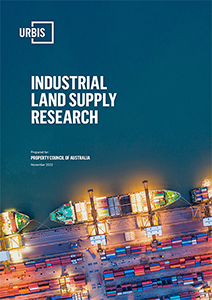Between 2015 and 2021, the proportion of e-commerce to all retail trade increased from 5.6% to 12.7%. This has translated into exponential growth in demand for industrial floorspace.
To understand the level of supply and associated consumption in the industrial market, the Victorian Government, through the Department of Environment, Land, Water and Planning (DELWP) undertakes an annual assessment of industrial land supply in the region. The most recent Urban Development Program report for 2021 quoted 7,856ha of vacant and underutilised land, amounting to 26.1 years of supply, based on an average consumption rate of 301ha.
In significant contrast, our report found that there is only 4 years of zoned industrial supply remaining in Metropolitan Melbourne’s core industrial precincts. These results are based on our methodology of identifying regions of market activity, analysing and classifying sites within those regions on their physical attributes and engaging with the wider industry through case studies to gauge the actual quantum of active zoned supply available.

